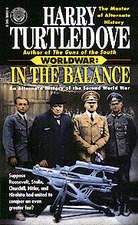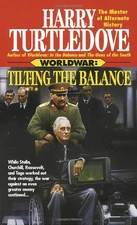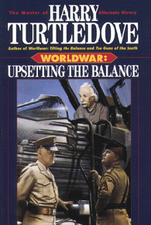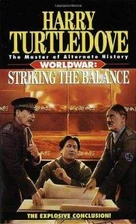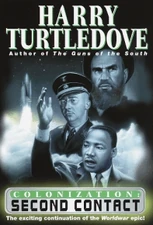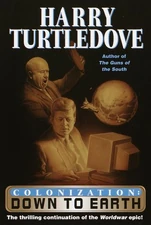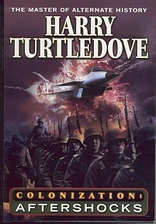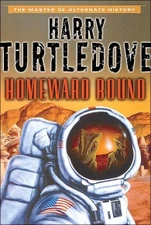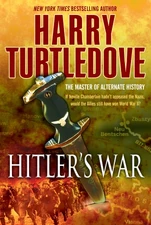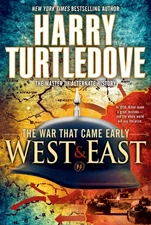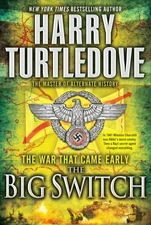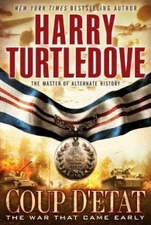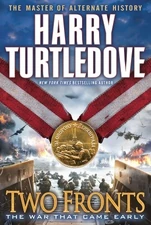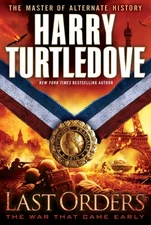| ||||||||||||||||||||||||
Edward Frederick Lindley Wood, 1st Earl of Halifax (16 April 1881 - 23 December 1959) was a British politician. Throughout his career, he served as Viceroy of India (1926-1929), Foreign Secretary in the Neville Chamberlain and Winston Churchill governments (1938-1940), and ambassador to the United States (1940-1946).
Halifax's left arm was withered at birth, and a left hand had never developed.
Lord Halifax in Worldwar[]
Lord Halifax was the British Ambassador to the United States during World War II and the war against the Race.
Halifax had been an architect of appeasement of Adolf Hitler in Neville Chamberlain's government. Although a member of the Conservative Party, he and Chamberlain's successor, Winston Churchill, did not get along very well, and so Halifax was sent abroad. He was somewhat marginalized by Churchill's insistence on maintaining tight supervision over Anglo-American affairs during the war with Germany. Churchill maintained this supervision even when the Race invaded in 1942.
| Worldwar POD: May 30, 1942 | |
| Appearance(s): | Upsetting the Balance |
| Type of Appearance: | Direct |
| Political Office(s): | Ambassador to the United States |
Halifax participated in the Anglo-American-Soviet summit in New York City in 1943. Here he was introduced to Vyacheslav Molotov, who secretly disdained Halifax for his history of appeasement. Halifax expressed his wish that a policy of balance be achieved once major Earth powers showed that they too had atomic bombs and could use them effectively against the Race. His colleague, Lord Beaverbrook, noted that, because the Race's Colonization Fleet was already on its way, such a policy would be difficult to implement.[1]
Lord Halifax in The War That Came Early[]
| The War That Came Early POD: July 20, 1936; Relevant POD: September 29, 1938 | |
| Appearance(s): | The Big Switch |
| Type of Appearance: | Direct |
In 1940, on the eve of the Hess Agreement, Lord Halifax took part in the funeral procession of Winston Churchill by marching in the front rank of Conservative officials. However, he did not display much of a sense of gravitas during the procession, smiling and joking with those marching close to him.[2]
Halifax's influence was viewed with disdain even after the coup of 1941 and the end of the Second World War in 1944.[3]
Lord Halifax in Southern Victory[]
| Southern Victory POD: September 10, 1862 | |
| Appearance(s): | In at the Death |
| Type of Appearance: | Direct |
| Political Office(s): | Ambassador to the Confederate States |
Lord Halifax was the British ambassador to the Confederate States. He had a somewhat rocky personal relationship with President Jake Featherston, and tried to express, in carefully chosen diplomatic terms, disapproval of the mass killing of blacks. However, Featherston vehemently rejected all such criticism. Nevertheless, Lord Halifax obtained for Featherston British assistance in the development of the superbomb, in exchange for Confederate expertise in rocketry.[4]
References[]
- ↑ Upsetting the Balance, pgs. 349-351.
- ↑ The Big Switch pg. 235.
- ↑ Last Orders, pg. 379.
- ↑ In at the Death, pgs. 140-44.
| Political offices (OTL) | ||
|---|---|---|
| Preceded by Henry Finnis Blosse Lynch |
Member of Parliament for Ripon 1910–1925 |
Succeeded by John Waller Hills |
| Preceded by Anthony Eden |
Foreign Secretary of the United Kingdom 1938–1940 |
Succeeded by Anthony Eden |
| |||||||||||||||||||||||||
| ||||||||||||||||||||||












